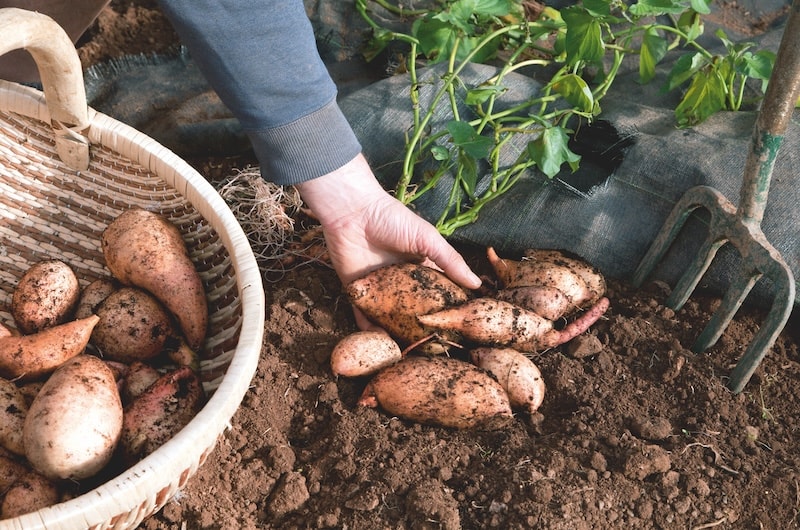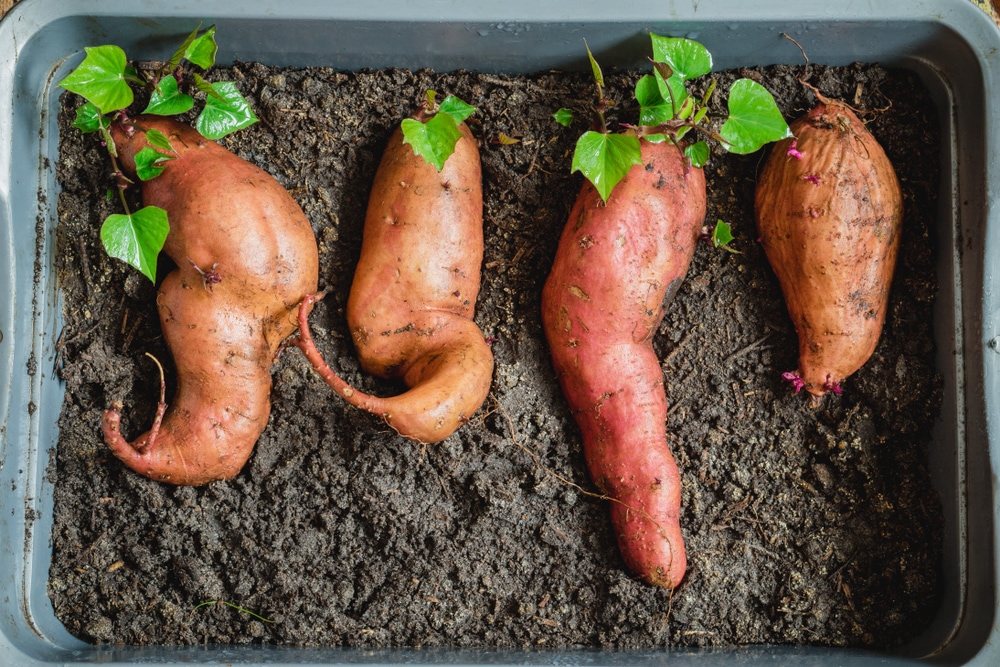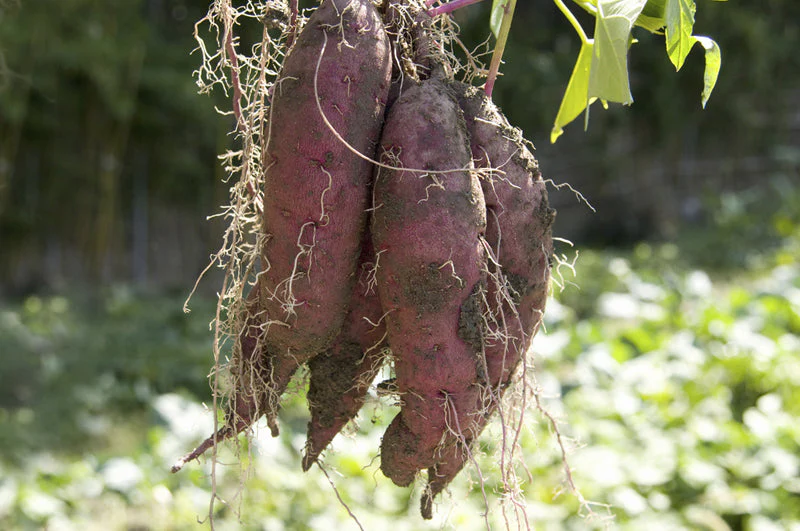Sweet potatoes are a nutritious, easy-to-grow crop that thrives in warm climates and well-prepared soil. Whether you’re gardening in your backyard or planning a small-scale farm, one of the most crucial steps in ensuring a successful harvest is proper soil preparation. Sweet potatoes are sensitive to poorly draining, compacted, or nutrient-deficient soil, which can lead to stunted growth, low yields, or even crop failure.
This comprehensive guide explores everything you need to know about preparing your soil to grow healthy and productive sweet potato plants.
1. Why Soil Preparation Is Vital for Sweet Potatoes

Unlike other root crops, sweet potatoes are highly particular about the type of soil they grow in. The development of their fleshy, edible roots is directly influenced by the soil’s texture, structure, fertility, and drainage.
Without proper preparation, the roots may become misshapen, rot due to excess moisture, or fail to develop entirely. By investing time in prepping your soil, you set the stage for vigorous vine growth and plentiful tuber formation.
2. Choosing the Right Location
Start with selecting a well-drained, sunny site. Sweet potatoes love the sun—aim for at least 6 to 8 hours of direct sunlight per day. Avoid areas prone to waterlogging or poor drainage, as soggy conditions can cause the roots to rot.
Raised beds, containers, or mounded rows are ideal for sweet potato growing, especially in regions with heavy clay soil.
3. Testing the Soil

Before amending your soil, it’s a good idea to conduct a soil test. This will help you understand:
- pH level: Sweet potatoes prefer slightly acidic soil with a pH between 5.5 and 6.5.
- Nutrient levels: Focus on potassium and phosphorus, which support root development. Avoid excess nitrogen, which can cause excessive vine growth with poor tuber formation.
- Soil composition: Knowing whether your soil is sandy, loamy, or clay-heavy helps determine the amendments needed.
Soil test kits are available at garden centers, or you can send a sample to a local agricultural extension service for more accurate results.
4. Ideal Soil Texture and Structure

Sweet potatoes grow best in light, loose, and sandy loam that allows roots to expand easily and drains well. Here’s a breakdown:
- Sandy soil: Ideal for tuber expansion but may need added organic matter to retain nutrients.
- Loamy soil: Excellent balance of drainage and fertility.
- Clay soil: Should be heavily amended with compost or sand to improve aeration and drainage.
Avoid compacted or rocky soils, as they hinder the growth of straight, uniform tubers.
5. How to Improve Soil Drainage
If your soil is heavy or prone to waterlogging, improve its drainage with these methods:
- Add organic matter: Mix in well-rotted compost, aged manure, or leaf mold to loosen soil structure.
- Use coarse sand or perlite: These help increase porosity and prevent compaction.
- Build raised beds or ridges: Elevating the planting area helps excess water drain away from the root zone.
6. Enriching Soil Fertility

Sweet potatoes are light feeders, but they still need a balanced nutrient supply for optimal growth. To enrich your soil:
- Compost: Add 2–3 inches of well-rotted compost and till it into the top 10–12 inches of soil.
- Manure: Use aged manure (never fresh) to improve fertility and structure.
- Bone meal or rock phosphate: Provides phosphorus for strong root development.
- Wood ash or greensand: Supplies potassium naturally.
Avoid using high-nitrogen fertilizers, which encourage foliage at the expense of root formation.
7. Adjusting Soil pH
If your soil test reveals a pH outside the ideal range (5.5–6.5), adjust accordingly:
- To raise pH (more alkaline): Add agricultural lime or wood ash.
- To lower pH (more acidic): Add elemental sulfur, peat moss, or pine needle mulch.
Retest your soil after amendments and make gradual changes, as extreme pH shifts can harm plant health.
8. Solarizing Soil to Kill Pests and Weeds

Solarization is a natural method of disinfecting soil by using the sun’s heat to eliminate harmful organisms. This is particularly helpful before planting sweet potatoes if your site has issues with:
- Root-knot nematodes
- Soil-borne fungi
- Weed seeds
How to solarize:
- Water the soil thoroughly.
- Cover it with clear plastic sheeting.
- Leave it in place for 4–6 weeks during hot weather.
This method effectively reduces soil pests without chemicals.
9. Creating Planting Beds or Mounds
Once your soil is enriched and well-drained, create planting rows or mounds:
- Rows: Space 3 feet apart with loose, cultivated soil 10–12 inches deep.
- Mounds: 8–12 inches high and 12–18 inches wide.
- Raised beds: 8–10 inches high work well for small gardens or containers.
These elevated planting zones promote root development and help maintain optimal soil moisture.
10. Timing Soil Preparation
Prepare your soil 2–4 weeks before planting slips (young sweet potato shoots). This allows organic amendments to settle and beneficial soil microbes to become active.
In warm regions, soil prep can begin in late winter or early spring. Make sure the soil temperature reaches at least 60°F (15°C) before planting, as sweet potatoes need warm conditions to thrive.
11. Avoiding Common Soil Prep Mistakes
Even well-meaning gardeners make errors that can delay or reduce harvests. Here’s what to avoid:
- Over-fertilizing with nitrogen: Leads to lush leaves, not tubers.
- Skipping the soil test: May cause nutrient imbalances.
- Using fresh manure: Can burn roots or introduce pathogens.
- Ignoring drainage issues: Leads to rot and fungal problems.
12. Mulching for Long-Term Soil Health
Once the slips are planted, apply organic mulch to retain moisture, regulate temperature, and suppress weeds. Great mulch options include:
- Straw
- Grass clippings
- Shredded leaves
Over time, mulch breaks down and enriches the soil for future plantings.
Conclusion
Growing sweet potatoes successfully begins below the surface. By taking the time to properly prepare your soil—testing, amending, loosening, and enriching—you lay the foundation for vigorous vines and delicious tubers. With the right soil texture, pH, and fertility, your sweet potato crop will be healthy, resilient, and rewarding.
Don’t rush this foundational step—after all, great harvests grow from the ground up!






Leave A Comment